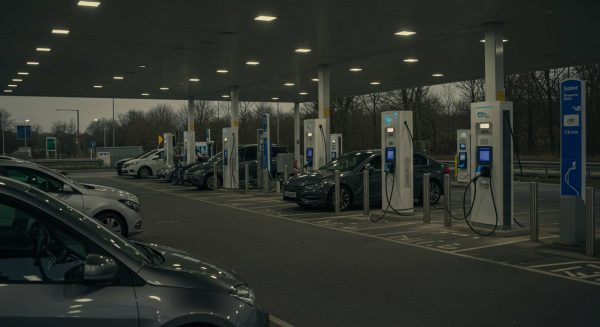Gone are the days when motorway services were simply places to grab a coffee and fill up with petrol. A sweeping transformation is underway across Britain’s motorway network, driven by new legislation that’s turning these familiar pitstops into high-tech charging hubs for the electric vehicle revolution.
Minimum Requirements Coming into Force
The Automated and Electric Vehicles Act 2018 laid the groundwork, but recent government strategies are now putting meat on the bones. According to the Act, by the end of 2023, every motorway service area must have installed at least six high-powered charge points, with some larger sites offering up to twelve; most have done this. Think of it as the electric equivalent of ensuring there’s always a free pump at a petrol station—but these new chargers will be capable of adding hundreds of miles of range in the time it takes to enjoy a cup of coffee.
The Scale of the Transformation
The change is dramatic when you consider the numbers. According to the UK Electric Vehicle Infrastructure Strategy, there will be over 6,000 high-powered charge points across England’s motorways and major A-roads by 2035. This is a significant leap from today’s network, though the UK already leads Europe in fast chargers per 100 km of motorway, according to Transport & Environment’s 2020 study.

Making Charging Reliable and Accessible
Perhaps the most significant change for drivers is the focus on reliability. New legislation required rapid chargepoints (50 kW and above) to meet 99% minimum reliability standards by the end of 2023. Just as you wouldn’t expect to find all the petrol pumps out of order at a service station, the same will be true for EV chargers.
Future-Proofing the Grid
One of the biggest challenges isn’t just installing chargers; it’s ensuring the electricity network can handle them. That’s where the government’s £950 million Rapid Charging Fund comes in. This fund will help service areas upgrade their electrical infrastructure to meet future demand, similar to ensuring water pipes are big enough to supply multiple shower blocks rather than just a single tap.
What This Means for Drivers
For EV drivers, these changes mean greater confidence in long-distance travel. The government’s strategy ensures that drivers are never more than 25 miles from a rapid chargepoint anywhere along England’s motorways and major A roads. Payments will be simplified too, with contactless card payments becoming standard rather than requiring multiple apps or membership cards.
The vision is clear: by the time the sale of new petrol and diesel cars ends in 2030, Britain’s motorway services will be ready to support the electric vehicle revolution, making electric road trips as convenient as traditional ones have always been.
This transformation shows how seriously the UK is taking its commitment to zero-emission vehicles. For motorway service operators and drivers alike, it’s not just about adding chargers; it’s about reimagining these familiar roadside stops for a new era of electric mobility.
